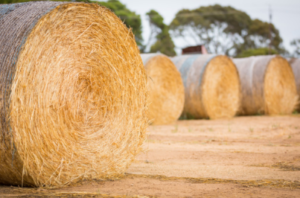In the sprawling landscapes of Australia’s agricultural heartlands, where golden fields stretch as far as the eye can see, a crucial component quietly performs its role in ensuring the efficiency and success of the harvest season. This unsung hero is the bulky baler twine, a fundamental tool that plays a vital role in securing and preserving hay and straw bales across the vast expanses of the Australian outback. In this article, we delve into the multifaceted significance of bulky baler twine in Australian agriculture, exploring its importance, applications, innovations, and the challenges it faces in the contemporary farming landscape.
 The Backbone of Australian Agriculture
The Backbone of Australian Agriculture
Australian agriculture is deeply intertwined with the production of hay and straw, vital resources used extensively for livestock feed and bedding. With millions of hectares of pastoral land and a thriving livestock industry, the demand for high-quality bales is perennial. Enter bulky baler twine – the backbone of Australian agriculture. This sturdy and resilient twine serves as the linchpin, ensuring that bales are tightly bound and protected from the harsh elements of the outback.
Strength in Diversity: Types of Baler Twine
Bulky baler twine is just one variant in a diverse array of baling materials available to farmers. Traditional sisal twine, once ubiquitous in Australian farming, has gradually been replaced by synthetic options like polypropylene and polyethylene. Bulky baler twine distinguishes itself with its robustness and durability, making it particularly suited to the demanding conditions of the Australian climate. It is thick construction, and high tensile strength enable it to withstand the rigours of baling, transportation, and storage with ease.
Enduring Durability in Harsh Conditions
The Australian outback is renowned for its extreme weather conditions, ranging from scorching summers to fierce storms and biting winds. In such a challenging environment, ordinary twines are prone to deterioration, compromising the integrity of the bales they secure. Bulky baler twine, however, is engineered to withstand these adversities. Its resistance to UV degradation ensures prolonged durability under the relentless Australian sun, while its high tensile strength prevents breakages even in the face of strong winds and rough handling.
Enhanced Efficiency and Cost-Effectiveness
Efficiency is paramount in modern agriculture, where time is a precious commodity. Bulky baler twine not only offers superior performance but also enhances operational efficiency on the farm. Its thick gauge and strong grip facilitate faster baling, reducing downtime and labour costs. Moreover, its durability translates into fewer instances of bale breakage during handling and transportation, minimising wastage and maximising productivity. While the upfront cost of bulky baler twine may be higher than its counterparts, its longevity and performance make it a cost-effective investment for farmers in the long run.
Innovations Driving Progress
The agricultural industry is no stranger to innovation, and the realm of baler twine is no exception. Advancements in materials science and manufacturing techniques have led to the development of twines that are lighter, stronger, and more environmentally friendly than ever before.
In the vast expanse of the Australian outback, where the rhythm of life is dictated by the seasons, bulky baler twine stands as a testament to the ingenuity and resilience of the farming community. Its strength, durability, and versatility make it an indispensable tool in the arsenal of every Australian farmer, binding the harvest and ensuring its safe passage from field to fodder. As agriculture continues to evolve in response to changing climates and market demands, bulky baler twine remains steadfast in its role as a cornerstone of Australian farming tradition and innovation.
A staple in every farmer’s truck is a spool of baler twine. This essential tool is used to pack hay and straw bales, which in turn are used for feeding livestock. It’s an important way to help keep animals sheltered and separated from each other while providing them with a food source that is healthy for them. It is also a vital part of building fences, replacing metal wire that would otherwise harm the animals or get caught in machinery.